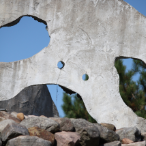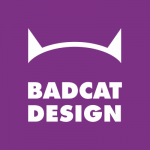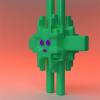Search the Community
Showing results for tags 'convert'.
-
Hi ... first of all --- i love using AD! But now i am stucked :( i want to use a contour - which shall look like a stitched seam - and substrate it from the main curve - which is a heart. So the background will "go through" - for example, if I want to use a transparent png Are the any hint to substrate contours from curves ? Cause if i use the normal way it looks like this ... i didn`t found any option to convert the contour/curve into a normal curve. Like i do with the "W" and cut it “of“ ... #thx
-
There's a mountain of people out there that would love to be able to convert Microsoft Publisher files to InDesign. Why don't you get the jump on them and a massive audience by making Affinity Publisher able to open or convert those .pub files on Mac. I think the only way to do it at the moment is to save the .pub files as PDFs them open them. Doing it this way nearly all of the subtle editing features are lost but at least you can copy and paste the basic elements. It would be great just to be able to open them in Publisher too.
-
The functionality to switch between artistic and frame text would be a great addition to Designer... Illustrator's implementation of doing this (double click a specific node on a text object, or right click > convert to...) is a perfect example on how it should be handled. Here's a thread with a whole bunch of other people wanting this as well.
-
Since some of us have been using Designer as a sudo publishing app I naturally attempted to transfer/convert my Designer to a Publisher document. Well the good news is you can open the a Designer file straight in publisher the bad news is that's about it. Publisher right now doesn't give any options on how to translate or configure the file. Same goes for when "placing" a document, in particular a designer one, but I'll get to that later. So here are somethings that could be useful: 1. Publisher could give the option to read in all or selected Designer's Art boards as pages.(Preferred) 2. Publisher could give the option to read in all or selected Designer's "Slices" as pages, and or possibly converting the "Slices" feature into a "slices" adaptation in Publisher as well. 3. Publisher could also give the option to read in and convert Designer's vectors into Publishers vector when embedded. 4. Publisher could also give the option to read in and convert Designer's document color palettes into Publishers color palette. As for the placement feature in Publisher: 1. Again give the option to read in all or selected Designer's Art boards(Preferred) or slices as pages. 2. Right now placement adheres to the Publisher's document size which is strange especially when the imported document is larger than Publisher's document size. I don't mind Publisher centering on the upper lefthand corner of the placed document, but it would be useful if it would respect the it's original size and allow it to move/slide it around with in the Publishers adjustment frame. Overall UI features that would be useful.. This may have been covered somewhere, so I'm sorry if it has: 1. Color coding for the layers that's represented in the layers themselves and in the vector lines and frames. 2. A "slices" or layer parsing feature like in Designer. 3 Epub exporting with interactive links. 4. Of course that would mean Interactive links features that would be support in Epub documents. These are possibly forward thinking but not really all that radical in nature especially in this ePub era: 1. This may sound crazy but today I don't think it really is, but maybe have an HTML5 feature or robust implementation and export, which of course would mean. 2. Movie and gif import capabilities or links sourcing links vimeo, youtube, flicker, google maps and the like and so on. 3. Front end for database configurations for sql, filmmaker, excel, numbers and what ever other mainstream databases there are. 4: Password protection and sign in features. 5. Some site analytics feature sourcing and so on. Whatever makes sense. (I used iWeb in the past which was extremely rudimentary, so I think making this sort of leap isn't that far fetched and I believe it would truly cement publisher's title and a true Publishing App) 6. Dashboard or Web Clip exporting. 7. Mobile device configurations/presets and deployments and or exports. 8. Simple Xcode export for UI with some possible simple interactive coding included. 9. ftp site uploading and updating features. Well that's it for now.
-
In other DTP applications I've used, sometimes there are fonts that cannot be embedded for whatever reason. The usual reason is because they have copyright/license restrictions, but there are others that don't come to mind at the moment. The other DTP software outlines - converts to vectors - these fonts. I was wondering what Publisher did with fonts like these. Does it outline the text or do something else? I've had a look around the Help, various dialogs, and this forum and can't find anything related to embedding/outlining fonts. Also, on a related note, is there a way to force Publisher to outline either everything in a particular font, or a specific piece of text, or the contents of a specific text frame? I ask this question as I sometimes want to have certain text outlined so that non-human readers can't read the text - e.g. phone numbers, email addresses, etc. In other software I've used a specific font for these items and then told the software to outline everything that uses these fonts. I could manually convert certain items to curves but that's a bit awkward, especially for editing purposes. (Also, sometimes I find that a certain browser/PDF-reader has trouble with a certain fonts when they are embedded so I use outlining for this reason too.)
-
Hi, I'm placing an SVG file in Designer and try to convert to curves, but the menu item is disabled. This works perfectly with the same file in PagePlus X9. what am I doing wrong? Greetings, Sigurd
-
Would like to see an option allowing the conversion of Designer files that include multiple Artboards to Publisher Pages. Currently it seems as though all Designer artboards are converted to a single giant page in Publisher. I have built a number of 24 - 60 "page" files using Designer in hopes that Publisher would have some option to see the artboards as pages. Bonus Request: Allow entering "Number of Pages in the New Document dialog, saving a step from going to the "Add Pages" dialog. thanks!
-
hello, new here. I read some topics on conversion from rgb to cmyk but still in doubt... I have done some illustrations for a children book in affinity designer, with ,for some, backgrounds with gradients, text on a path. all in rgb. First time I am working in vectors. The infographist who is assembling everything for the printer ask me to convert to cmyk. I did, reworked the colours that were different and very dulled. when converting I choose, print (press-ready), 300 dpi, cmyk-8 (us web coated swop)V2, transparent background and checked " assign" He asked for a EPS file. When he opened the file, a warning appeared saying that some elements were still in rgb. Did I missed something? I have multi layers with vectors , should I merge them? Apparently, text on a path can be a problem as gradiant, some are from full colour to transparent. thank you very much for your help Benedicte
-
Hey everyone! Sometimes, curve operations will create sharp edges on one side of a node and a smooth or smart line on the other side, resulting in only one handle being there. Do you know if there is a way to add a second handle to a node without affecting the one that is already there? I could convert the node to "Smooth" or "Smart", but this will result in changes of the handle that's already present. Best wishes, Shu EDIT: Added a file and image to show the problem. test.afdesign: The original blue shape was drawn over the orange one, so I made nodes close to the orange shape, selected them and clicked "Action" -> "Break Curve", resulting in the four new blue curves (two can be deleted, which I disabled in the file). However, those curves are missing the handles that are required to make the adjustments shown in image.png (pink lines are supposed to be the adjusted outlines of the blue shapes). test.afdesign
-
Hey guys, yes i know something similar has been asked before but all the other posts I have seen didn't answer my question. I understand that converting RGB to CMYK withhout color differences won't always be possible since the color garmut of RGB is a lot bigger than the one for CMYK. What I don't understand is: If i try to do it the other way (CMYK to RGB) shouldn't it be possible to get the same color in RGB as I have in CMYK? Maybe you can also tell me how you handle it if your client needs a logo in RGB and in CMYK colors and wants them to be similar. Thanks a lot in advance can't wait to hear your replies. Greetings, Julian Icon_Farbe.pdf Icon_Farbe.pdf
-
Hi there I am on my first project with Affinity Designer. I have got two bitmaps in RGB and want both to be converted when I export my PDF. I tried to export with preset "PDF (for print)" but that file isn't readable in PDF Checkpoint (where I do preflights). I tried preset "PDF X3" and in the "More" settings I checked to set Compatibility to "PDF X3" Color Space to "CMYK" and Profile to "ISO coated v2 300% (ECI)". But the bitmaps stay in RGB after export. Only text and shapes are CMYK.
-
Hi guys, I can't seem to figure out what the difference is between CONVERT TO SMOOTH and CONVERT TO SMART for a node. Is there a difference? Thank you
-
Hi , another question, or suggestion from my students. I was asked, if there´s a way, to easy right click or script for example, to get an option to export a chosen layer or group to get converted to an embedded object. At the moment as far as i know there´s only the possibility to place a document as an embedded file. but it also would be good in some cases to be able to convert an existing layer to an embedded object. thanks again for any answer.. Tom
-
It would be nice if the current grid could be converted to paths. For one thing, any pattern you can make with the grid manager, which is a lot of patterns, can instantly be part of your actual composition. For another, it would make it possible to sort of have multiple grids at once. This would be useful for me: to have both a hexagonal grid and a rectangular grid at the same time.
-
I'd like to see some additional options in the node type selectors. Currently I can: Convert to Sharp Convert to Smooth Convert to Smart However, more often than not I want to add a handle just to one side of the point, effectively joining a curve to a straight segment. The only way to easily do this is to drag on the joining line to add handles to the 'inside' of the nodes at either end, then adjust these nodes after. My suggestion would be 2 more options to the above: Add handle to left Add handle to right I appreciate there might be occasions where those need to be 'Add above' or 'Add below', but this could be calculated, surely?
-
I can convert shapes to curve but I'd like to know if I can convert text to curve as I don't see an option for that in the context menu when I have a text selected. What I'm really trying to do is break up a text so I could put one part of its layer above an object and the other behind the object like the object is going through it. It's actually just the letter S.
-
Hello, I'm not an expert at design, but as I've need things I go to youtube or whatever online tutorials I can find. The problem is, with the tutorials, even the most recent ones, they recommend what to do, however, I don't have what is suggested on my menu's anywhere. I am trying to convert my text to a curve, and have gone to layer to find the covert to text path, and it is not there. My menu's do not look the same as what i have seen on many tutorials for other things as well. I have paid the full version, and I have checked for updates aswell. Could anyone perhaps tell me why this would be? I have placed a screen shot of what is in my menu. Thanks.
-
I'm not sure if it has been requested yet but it would be great to be able to convert Artistic text to Frame text because the text content doesn't always stays the same and for example, when you want to change a title to a paragraph at the moment you're force to create a new object (Frame text) and overlay it on the same pre-existing Artistic text. It just takes a lot of time if you need to repeat this action several times. And then again, if you need to change it back you have to start over replacing paragraphs with Artistic text.














